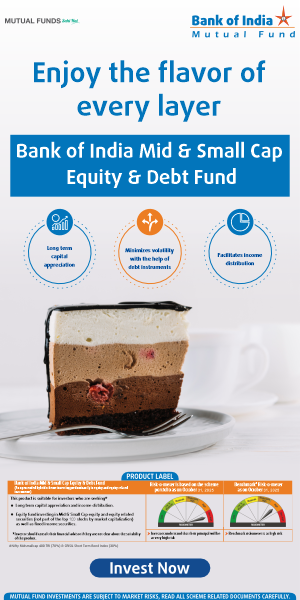What is Causing Losses: Markets or You

You have started investing but performances are far worse than what you anticipated. You soon start to make losses because of the falling markets. At first you ignored the phenomenon because it was a quick dip and would recover. However, instead of recovering it kept going down and reached a point where your investments have suffered major losses. So in the fear of losing the capital, you withdraw the investment and watch until the market recovers. You have sold the stocks at a low. When the market has slowly started to recover, you are also recovering from the losses. You anticipate that markets will go down again and slight rises do not change your decision to remain uninvested. From the slight rises, there is a stellar rise in the markets and this is the time you regret your decision to not invest when the rise was still moderate. At this stage you buy at a higher price. Hence, the question: did you make a loss because of the market or because of your investment behaviour?
To sum up the example above, the investor in question sold low and bought high. The classic investment mistake, which everyone wants to avoid but more people commit it. The investment education programs, blog, books and all other sources drill the fact that investors must buy low and sell high. Why do we keep making this common error? Who is then causing the losses?
Carl Richard’s ‘Behaviour Gap’
‘The Behaviour Gap’ is a term coined by Carl Richards in a book of the same name. The book points towards the existing gap of expected returns and actual returns. The difference is where our actions and emotions come to play. It is seen that investors who take the advice of financial planners tend to have actual returns closer to expected returns. Investors who take investments decisions autonomously tend to have a wide gap between expected and actual returns. Why for some people the gap is bridging and for some it is ever widening?
This is My Money: Rational Vs Emotional
Most investors, who invest a certain sum, are investing from their savings or monthly earnings. They may have had to forgo certain wants to make an investment. Hence, as humans they are apprehensive about the investment because they are closely tied to their personal goals. They are emotionally attached to their investments. During times of crisis they tend to react emotionally and take impulsive decisions to save their hard earned money. In the short term, profit or losses in the investment matter little to them as long as they can have the invested sum back. The tendency to react emotionally among investors is what stops them from staying invested for a long term and creating a wide gap in the expected returns and the actual returns.
Investors who involve a financial planner in the process of financial planning are not only taking expert advice but involving someone who is detached from the investments. Financial planner takes a rational approach to the investments. If they know you are in for the long haul they will discourage you from redeeming in a hurry or panic when the market fluctuates. They are aware that while no one can time the markets, a bull market gives way to a bear market and vice versa. Hence, such investors have a bridging gap between expected returns and actual returns. It is your behaviour towards the fluctuations which ensures the returns and not the individual stock performances.
Too High or Too Low: How Fear and Greed Works
All of us stress a lot on finding the perfect stock and perfect investment. The truth is there is no such stock and even you know that. Most investors tend to either sell low in falling markets out of fear or buy high in rising markets in rising markets out of greed. A lot of investors execute the behaviour depending on the market performance. As an investor, find out which behaviour: fear or greed, affects your investment decision and build a financial plan accordingly.
Investors often make bad decisions because they put a lot of effort in trying to understand the short term movement of the markets. There is an irrational belief among investors that they can predict short term moves. This usually stems from the need to control the circumstances surrounding their investments. Failing to do so, investors fail to make substantial returns. However, if you do not allow fear and/or greed to dominate your investment behaviour and stay invested for a long term you minimize risk and can predict returns because of the historical behaviour.
Less is Not More, More is More: Rejecting Simplicity
If things in our lives are going too smoothly we fear it is too good to be true. Humans are wired to look for complexities. If it is simple, then something is wrong and it is not good enough. We always watch out for complexities because we are sure that those are answers to our rather simple problems.
This is no different when you invest. If a financial adviser tells you, investing is simple and you could generate returns, you are sure he wants you to make losses. We have been wired to believe that all matters concerning money are rather complicated, especially investments. Out of this fear of complexity, a lot of investors stay away from investments in stocks. Hence, tomorrow if your financial planner gives you a simple financial plan to achieve all your financial goals you will be shocked because it is simple. As investors we tend to reject simplicity and think only complex financial plans are good enough for our goals. That is NOT true. According to ‘The Behaviour Gap’ 90% of the returns are generated by asset allocations and 10% from the individual stocks, bonds and funds.
If your financial planner is asking you to invest in only one fund from each of asset class and you do not act accordingly thinking it is too simple. You may want to think again. The reason we resist simple solutions is because it requires a change in our behaviour to embrace the simple and let go of the complex. You can simply bridge the behaviour gap by accepting more is less and it may simply take you far.
All Cards on the Table: Financial Planning
The process of financial planning is much more important than a definite financial plan. It allows an investor a peek into their assumed financial future, that is, where they wish to see themselves after a certain time period. This allows them to make provisions because an investor is aware that the future is unpredictable. However, consistent planning aimed at long term results will be beneficial. Financial planning forces an investor to think long term and avoid taking decisions based on short term emotions. While we waste a lot of time predicting a financial crisis; which we know we cannot let along prevent. We do not spend half as much trying to prevent it. Through this process we can provisions for things we can control: our finances to negate the effect of phenomenon that we cannot control.
The process of financial planning lets you put all your cards on the table: your future plans, your aspirations and allows you to look into the future. Short term impulses will no longer affect your investment decisions.
Conclusion
The Behaviour gap can be summed up by this quote by Carl Richards, “Being slow and steady means you’re willing to exchange the opportunity of making a killing for the assurance of never getting killed.” It is not the speculations and fluctuations that surround the market that affect of your investments as much your own behaviour to those does. Now knowing that you have lot of power should not make you fearful or greedy. You could be simply grateful that you are not completely out of control when it comes to controlling your financial future. The behaviour gap starts with you and if you are willing to change your behaviour then your future is willing to change for you. So are you ready to embrace the change? It all begins with you!
Queries
-
What is the benefit of mutual fund STP
Aug 29, 2019
-
How much to invest to meet target amount of Rs 2 Crores
Aug 26, 2019
-
Can I achieve my financial goals with my current mutual fund investments
Aug 24, 2019
-
Can you tell me return of various indices
Aug 19, 2019
-
What would be the post tax return on different investments
Aug 18, 2019
-
Which Principal Mutual Fund scheme will be suitable for my retirement corpus
Aug 16, 2019
-
What is the minimum holding period for availing NCD interest
Aug 4, 2019
Top Performing Mutual Funds
Recommended Reading
Fund News
-
Axis Mutual Fund launches Axis Gold and Silver Passive FOF
Dec 10, 2025 by Advisorkhoj Team
-
Jio BlackRock Mutual Fund launches JioBlackRock Arbitrage Fund
Dec 9, 2025 by Advisorkhoj Team
-
Tata Mutual Fund launches Tata BSE Multicap Consumption 50:30:20 Index Fund
Dec 9, 2025 by Advisorkhoj Team
-
Edelweiss Mutual Fund launches Edelweiss Silver ETF Fund of Fund
Dec 8, 2025 by Advisorkhoj Team
-
Abakkus Mutual Fund launches Abakkus Liquid Fund
Dec 8, 2025 by Advisorkhoj Team














